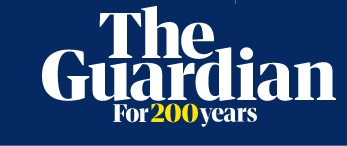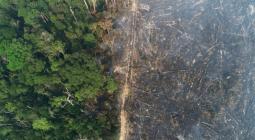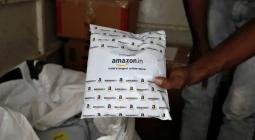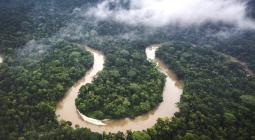Brazilian Amazon at risk of being taken over by mafia, ex-police chief warns
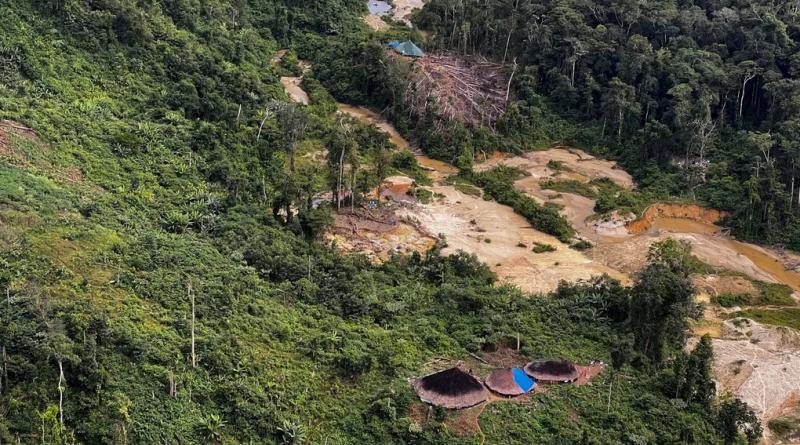
The rapid advance of organised crime groups in the Brazilian Amazon risks turning the region into a vast, conflict-stricken hinterland plagued by heavily armed “criminal insurgents”, a former senior federal police chief has warned.
Alexandre Saraiva, who worked in the Amazon from 2011 to 2021, said he feared the growing footprint of drug-trafficking mafias in the region could spawn a situation similar to the decades-long drug conflict in Rio de Janeiro, where the police’s battle with drug gangs and paramilitaries has claimed tens of thousands of lives.
“I experienced how the state lost control of public security in Rio de Janeiro,” Saraiva said. “And in the Amazon today – if nothing is done in terms of public security – we are facing a continent-sized Rio de Janeiro, with the aggravating factors of borders with major drug producers and an extraordinarily difficult jungle setting.”Saraiva warned of dire consequences for the rainforest and its inhabitants if criminal gangs were allowed to grow into powerful armies like the rebel factions in neighbouring Colombia. “We will have criminal insurgents … [whose] ideology is money,” he said.
“We will have areas of conflagration, of major conflict between groups which are fighting over areas of illegal gold and timber extraction. In the middle of this, we will have Indigenous victims. And we will face immense logistical difficulties in combating this,” warned the police chief, the author of a recent book called Jungle: Loggers, Miners and Corruption in a Lawless Amazon.
The alert came ahead of the first anniversary of the killings of the British journalist Dom Phillips and the Brazilian Indigenous expert Bruno Pereira, whose deaths exposed widespread environmental devastation and the growing reach of organised crime groups in the Amazon.
A year after their killings, the Guardian has joined 15 other international news media organisations and more than 50 journalists in a collaborative investigation into organised crime and resource extraction in the Brazilian Amazon, in an effort coordinated by Forbidden Stories, the Paris-based non-profit dedicated to continuing the work of reporters who are threatened, censored or killed.
Figures collated for the Bruno and Dom project by the Brazilian Forum on Public Safety (FBSP) paint a bleak portrait of organised crime’s deadly impact on the region, showing that:
-
With more than 8,000 deaths, the rate of intentional lethal violent crime in the Brazilian Amazon’s nine states was more than 50% higher than in the rest of the country last year – a murder rate similar to that of Mexico.
-
In Amazonas state, where Bruno Pereira and Dom Phillips were among 1,432 people killed last year, the murder rate was 74% above the national average. 2021 was even more violent with 1,571 victims and a violent death rate of 36.8 per 100,000 inhabitants – five times that of the US.
-
The number of people killed by military and civil police grew 71% in the Amazon between 2016 and 2021, compared with 35% in the rest of Brazil. The Amazon’s prison population grew 35.1% between 2016 an 2022 compared with 14.1% elsewhere, helping prison-run factions to flourish in overcrowded jails.
-
Brazil’s two most powerful crime factions – São Paulo’s PCC (First Capital Command) and Rio’s CV (Red Command) – now operate in all nine Amazon states, as do at least 15 other regional crime groups, including Os Crias, the Família do Norte and Class A Command.
-
Last year, the FBSP revealed how the Amazon now contained 10 of Brazil’s 30 most violent municipalities. They included remote illegal mining and drug smuggling hubs such as Jacareacanga and Japurá, and Novo Progresso, a deforestation hotspot from where Phillips reported for the Guardian in 2020. All three towns had staggeringly high murder rates of more than 100 per 100,000 inhabitants.The advance of organised crime groups in the Amazon was laid bare by the killings of Pereira and Phillips last year in the Javari valley, an Austria-sized sweep of rivers and rainforests on Brazil’s border with Colombia and Peru, the world’s top two cocaine producers.
Brazil’s environment minister, Marina Silva, told the Guardian that violence had long been “a hallmark of the predatory occupation of the Amazon”, pointing to the assassinations of activists such as Chico Mendes in 1988 and Sister Dorothy Stang in 2005.
The military dictatorship’s decision to colonise the Amazon in the 1960s – supposedly to stop hostile foreign powers commandeering the sparsely populated region – sparked a deadly struggle for land and resources, devastated Indigenous communities and caused deforestation to soar.
However, Silva said the “overlapping of multiple forms of criminality” in the Amazon now meant the state needed to increase its presence in affected regions. She highlighted the new government’s battle to evict illegal miners with links to the PCC from the Yanomami Indigenous territory.
The Public Safety Forum’s president, Renato Sérgio de Lima, said the statistics collected by his group’s researchers underlined how the arrival of drug factions had made a bad situation worse, causing Amazon murder rates to soar even as they fell elsewhere in Brazil.
Lima traced the advance of such groups into the Amazon to 2016 when a notorious drug trafficker was killed on Brazil’s border with Paraguay. That assassination helped the PCC consolidate its control of the drug smuggling route focused on the border town of Ponta Porã and forced its rival, the CV, to look further north to the Amazon.
The CV’s destination was Tabatinga, a scruffy town on the tri-border with Colombia and Peru, near where Phillips and Pereira were killed last June.
Lima estimated that the cocaine being smuggled through Brazil was now responsible for 4% of the South American country’s GDP – with about 40% of those illegal profits coming through the Amazon.
“We are talking about something like $25bn being injected into the Amazon’s economy every year and the region isn’t ready to deal with this,” he said, warning that the response from the armed forces had been woefully inadequate, with the army and navy seizing just 41 firearms in 2022.
Aerial images filmed by Brazil’s Globoplay, one of the news organisations involved in the Bruno and Dom project, showed a suspected cocaine laboratory and a series of coca farms that had been carved out of the jungles on the Peruvian side of the Javari. “If the Brazilian state doesn’t intervene in an urgent and firm manner, we’re going to have [entire] regions that are run by narco-traffickers,” said Beto Marubo, a prominent Indigenous leader who was close to Pereira.
Lima warned that if nothing was done, “the military’s fear [of losing control of the Amazon] will become almost a self-fulfilling prophesy. We will effectively lose sovereignty over the region and the region will be consolidated as the main narco-trafficking smuggling route in Brazil and to Europe.”
Rodrigo Chagas, an Amazon-based researcher who is studying the drug gangs’ rapid expansion for the FBSP, echoed the warnings of “Colombianisation”, which could see security forces launch a catastrophic “war on drugs” similar to the one that has blighted Brazil’s neighbour for decades.
“It’s possible the Amazon will see tremendous havoc. This is a scenario that worries me, because the public security responses we tend to see are ‘war on drugs’-style responses – a war which is utterly detrimental to local populations,” Chagas said.
Saraiva noted how Brazil’s armed forces had historically been obsessed with the supposed threat of an “external enemy” annexing the Amazon, a vast region nine times the size of France. “Meanwhile, we have an internal criminal insurgency which is corroding the Brazilian nation from within, [and] it’s happening far faster than we imagine,” warned Saraiva, who was the federal police chief in three Amazon states, Amazonas, Maranhão and Roraima.It was while serving in Amazonas that Saraiva came into contact with Pereira. In 2019, shortly before Pereira was forced from his job with the government’s Indigenous protection agency, Funai, the police chief helped the Indigenous defender launch a major anti-mining operation in the Javari region called “Operation Korubo”. Sixty illegal mining dredges were destroyed during those raids, which Saraiva believed put Pereira “in a very delicate position”.
“In the Javari valley we have a convergence between drug trafficking, illegal fishing, illegal logging and mining. And in the middle of all this, there was a guy called Bruno [trying to fight environmental crime],” Saraiva said, remembering a brave and passionate activist with “selflessness in his DNA”.
Federal police have named a shadowy local figure with suspected ties to organised crime as the alleged mastermind behind last year’s killings. Experts say at least four Brazilian drug factions – the CV, PCC, Os Crias and the Família do Norte – operate in the region, as well as groups from Colombia and Peru.
Organised crime’s growing grip on the Amazon was again exposed last month when alleged PCC operatives attacked government forces during a raid on an illegal mine in the Yanomami Indigenous territory near Venezuela. Four men were killed in the shootout, including a PCC leader nicknamed “Presidente”.
A message intercepted by police and shared with the Guardian showed PCC chiefs urging members to retaliate against police for “the deaths of our brothers”. “From what I understand, the PCC isn’t just there to extract gold. Of course they’re doing this too. But the main thing is to use the illegal airstrips to send weapons and drugs to other countries, like Venezuela,” said one police source.
The story of Saraiva, whom Dom Phillips interviewed for the book he was writing about the Amazon, underlines the growing role of criminal factions in environmental crime.
Two years after he stopped working in the Amazon, he still travels in a bulletproof car – the result of intelligence suggesting the PCC planned to assassinate him, even though his focus had been fighting environmental crime, not drug smuggling.
“Organised crime is diversifying into other illegal activities that Brazilian society tends to see as lesser offences,” said Saraiva, who commanded Brazil’s largest ever seizure of illegal wood in 2020.
“The mafia goes wherever there’s money. It doesn’t care if it’s environmental crime, people smuggling, cocaine. And what they see there [in the Amazon] is gold and wood that’s being sold for a very high price. It’s obvious that it wouldn’t take them long to get involved in this.”
cover photo:An aerial view of an illegal mining camp surrounding huts of an Indigenous tribe, taken during an operation against Amazon deforestation at the Yanomami territory in Roraima state, Brazil, in February. Photograph: Alan Chaves/AFP/Getty Images
